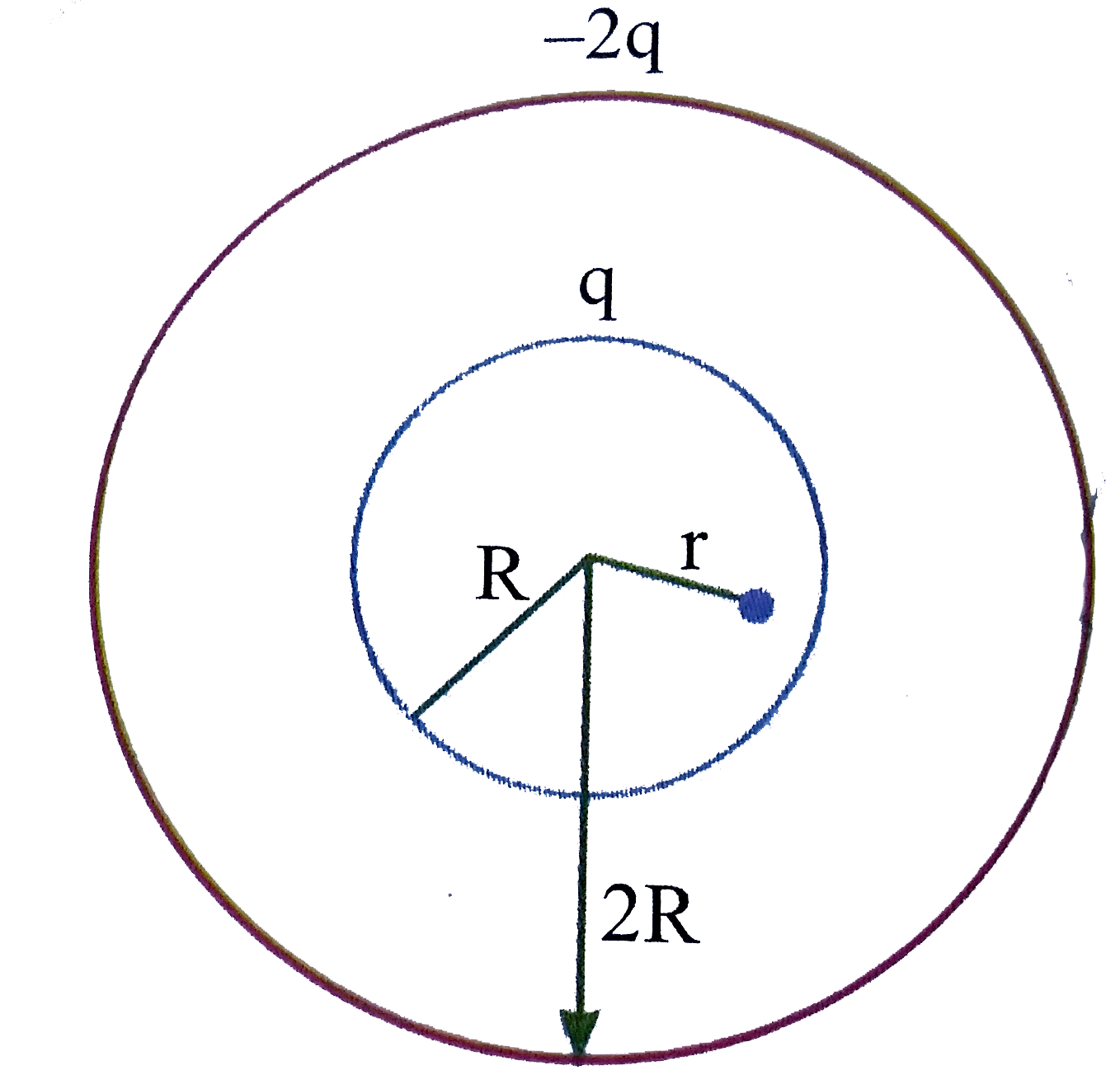Let V and E denote the gravitational potential and gravitational field at a point. It is possible to have
(a) V = 0 and E = 0 (b) V=0 and E≠0
(c) V≠0 and E=0 (d) V≠0 and E≠0
only a, b are true
only b, c are true
only a, c, d are true
all are true
The correct Answer is:C
Similar Questions
Let V and E denote the gravitational potential and gravitational field at a point. It is possible to have (a) V = 0 and E = 0 (b) V = 0 and E != 0 (c) V != 0 and E = 0 (d) V != 0 and E != 0
View SolutionTwo concentric shells of radii R and 2R have given charge q and −2q as shown in figure in a region r<R

(a) E=0,(b) E≠0,(c ) V=0 (d) V≠0
View SolutionLet V and E denote the gravitational potential and gravitational field at a point. Then, match the following columns
Column-IColumn-II(A)E=0,V=0(p)At centre of spherical shell(B)E≠0,V=0(q)At centre of solid sphere(C)V≠0,E=0(r)At centre of circular ring(D)V≠0,E≠0(s)At cetre of two point masses of equal magnitude(t)None
View SolutionIs it practically possible have (E - V) < 0
View SolutionLet V and E denote the gravitational potential and gravitational field at a point. It is possible to have
View SolutionWhich of the following redox couple is stronger oxidizing agent ?
a. Cl2(E0=1.36V) and Br2(E0=1.09V)
b. MnOΘ4(E0=1.51V) and Cr2O2Θ7(E0=1.33V)
View SolutionWhich of the following redox couple is stronger reducing agent ?
a. Li(E0=−3.05V) and Mg(E0=−2.36V)
b. Zn(E0=−0.76V) and Fe(E0=−0.44V)
View Solution

